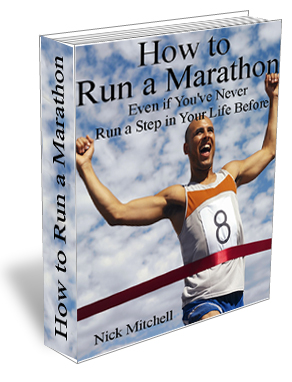If You Want to Finish Your Race, Don’t Make This Common Mistake Which can Lead to The Bonk
I have often seen and heard of people who “bonked”, “hit the wall” or any one of a number of terms used to describe someone who has come to a grinding halt.

The Bonk or to Hit the Wall is a common mistake but is easily avoided
Usually, they ran too fast at the start of their race and simply ran themselves into the ground, so that they either had to walk to the finish or didn’t finish at all. It doesn’t need to be like that.
To experience The Bonk, or Hitting the Wall is something very unpleasant. I’ve been there. It can be distressing, frustrating and of course desperately disappointing. You see your race-time goal going down the drain, and I really want you to be able to avoid that.
Marathon racing is all about pacing. At the start of your race you will have adrenaline surging through your body and can get caught up in the thrill of the race and end up as a casualty. If you experience The Bonk there is no going back. Your race will be ruined.
It’s much better to decide on your race strategy up front and stick to it. Determine your estimated finish time and calculate back to determine your “splits”. These are the times at which you should reach predetermined points of the race distance and can be every mile/kilometre or at every 5 mile/kilometre distances. You should try this in training as this will get you in the habit of keeping an eye on your watch as well as give you a good idea of what pace you run at.
If you have a watch or heart rate monitor into which you can programme your splits then try this out in training. Alternatively, you can simply write them on to the back of your hand or on to a piece of paper which you can put in to a plastic bag to protect it from the elements and your sweat.
You should aim for an even paced race or even better, one with a negative split (a race where the first half is run fractionally slower than the second half). This will ensure you don’t go off too hard and too fast and deplete your energy stores way before the finish line.
There's a Lot More Where That Came From… |
|
 |
This article is a condensed snippet taken from Nick Mitchell’s information-packed manual How to Run a Marathon. Your essential manual to enable you to run a successful marathon includes training schedules, advice on everything you can think of and lots you probably haven’t even thought of! You need this manual if you want to cross the marathon finish line with energy to spare, in a personal best finishing time and with a big smile on your face. More details here: VirtualHealthClub.com/marathon |
